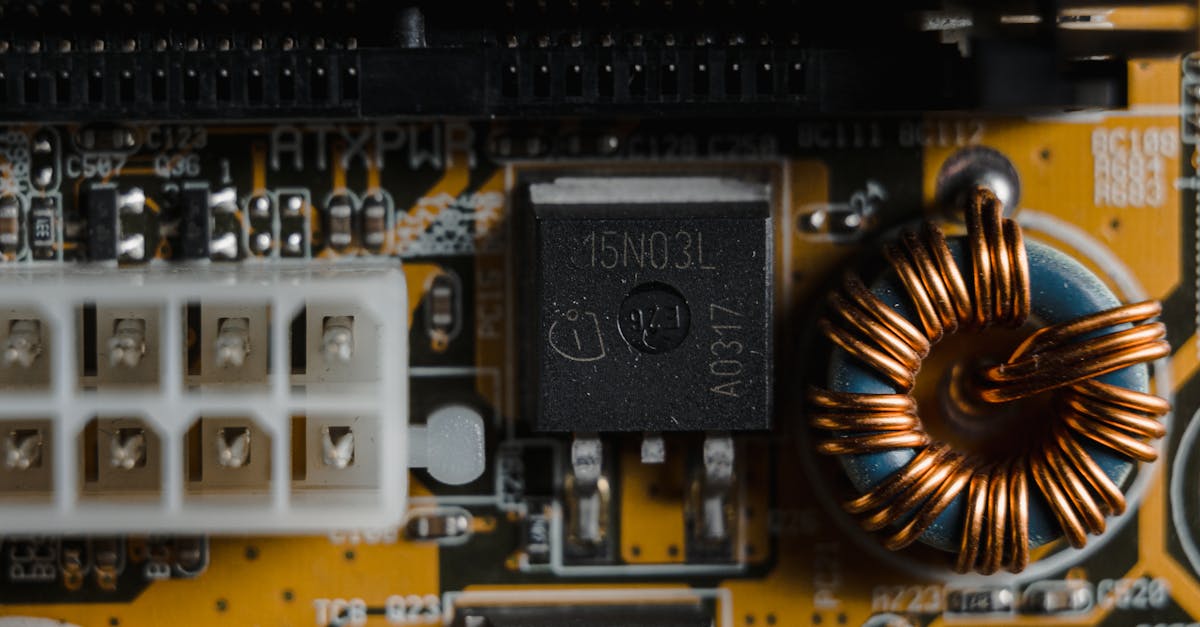Evolution of Mobile Processors What Changed
Introduction
In the world of modern technology, mobile processors have played a pivotal role in transforming our interactions with devices. These tiny yet powerful chips are at the heart of almost every digital experience on smartphones and tablets. Over the past few decades, they have evolved from simple processors with limited functions to sophisticated systems capable of handling complex tasks. This evolution has driven innovation, shaped the competitive landscape, and redefined consumer expectations. Understanding the history and development of mobile processors provides insights into the industry's rapid advancements. Let's delve deep into this fascinating journey of technological progress.
Advertisement
Early Beginnings
At the onset of the mobile era in the late 1990s, processors were basic, often slow and inefficient by today's standards. The ARM architecture became a game-changer, offering a balance between low power consumption and sufficient processing power. Companies like Nokia and Ericsson led the charge in incorporating these processors into mobile devices, forever shifting the direction of the market. While these early chips were limited mainly to voice communication and SMS, they set the foundation for future developments. The industry began to recognize the enormous potential and necessity for more powerful and efficient processors.
Advertisement
Dawn of the Smartphone Era
The launch of the iPhone in 2007 marked a new chapter in mobile processor evolution. Apple's A4 chip introduced an integrated approach by combining CPU and GPU on one silicon. This shifted focus from mere functionality to performance and efficiency, catalyzing the app economy. Competitors, like Qualcomm's Snapdragon series and Samsung's Exynos, quickly emerged, vying to enhance speed while reducing battery drain. This period saw increased emphasis on multitasking, camera capabilities, and gaming, driven by soaring consumer demand for improved mobile experiences.
Advertisement
Multi-core Revolution
The multi-core processor development revolutionized the industry, enabling phones to handle multiple processes simultaneously without lag. It began with dual-core processors and quickly expanded to quad and octa-core configurations. This innovation helped manage rising workloads, such as high-definition media streaming and advanced gaming experiences. Consumers now enjoyed faster apps, seamless operation, and extended battery life. The multi-core evolution emphasized balance, ensuring more power did not lead to increased energy consumption, preserving the consumer's mobile experience.
Advertisement
Architectural Advances
Processor architecture underwent significant changes with the introduction of 64-bit computing in mobile devices. ARM Holdings led this transition, influencing app development and operating systems to leverage increased memory and speed. It resulted in faster processing speeds and the ability to run more complex applications. Machine learning began integrating into the architecture, paving the way for AI-enhanced functionalities. Furthermore, architectural innovations contributed to expanding ecosystems, integrating with smart devices, and laying the groundwork for the Internet of Things (IoT).
Advertisement
AI and ML Integration
In recent years, artificial intelligence and machine learning have driven the latest wave of advancements within processors. Specialized cores for neural processing allow devices to execute AI computations directly, enabling applications like real-time translation, facial recognition, and augmented reality. For instance, Apple's Neural Engine and Qualcomm's Hexagon DSP exemplify this integration, efficiently handling complex computations and enhancing user experience. The pandemic of AI in mobile processors promises to bring innovative features while maintaining processing efficiency and energy management.
Advertisement
Graphical Advancements
Mobile graphics processing units (GPUs) have seen tremendous leaps, often paralleling their desktop counterparts. From playing multimedia content to supporting console-quality gaming, GPUs have become integral to the processor's role in delivering vibrant displays and rich graphics. The evolution of graphics technology has enhanced user experience, providing realistic visuals and immersive content consumption. This trajectory continues to expand as VR and AR gain ground, demanding even more advanced graphical capabilities.
Advertisement
Energy Efficiency Challenges
While power has exponentially grown, challenges remain in energy efficiency. Engineers have tirelessly worked to counterbalance increased processing prowess with battery consumption management. Innovations like adaptive performance scaling and intelligent energy management have emerged, reducing energy use without sacrificing performance. Low power consumption remains a priority, as users demand longer battery life without sacrificing the growing functionalities of their mobile devices. Balancing these elements remains crucial as device capabilities and consumer expectations continue to rise.
Advertisement
Future Prospects
The rapidly advancing field of mobile processors hints at exciting futures. Cutting-edge technologies such as AI-driven self-optimizing systems, quantum computing integration, and heightened neural processing potential are under exploration. Some expect an increase in collaborative processing technologies allowing seamless data communication between devices. Additionally, future architectures could lead to energy independence with solar-assisted processors, further redefining battery technology. The horizons bear promise of more powerful, energy-efficient, and versatile processors that will enable unprecedented device functionalities.
Advertisement
Conclusion
The journey of mobile processors reveals a continuum of innovation powering every aspect of modern communication and entertainment. From early ARM processors to cutting-edge AI integrations, each step has addressed unique challenges, advancing technology and reshaping user expectations. The evolution underscores the industry's commitment to fostering a dynamic blend of power, efficiency, and scale. Future advances hold the potential to redefine the digital landscape further, contributing to groundbreaking innovations and enriching daily life. As technology progresses relentlessly, mobile processors will continue to play a crucial role in propelling us toward an interconnected future.
Advertisement








